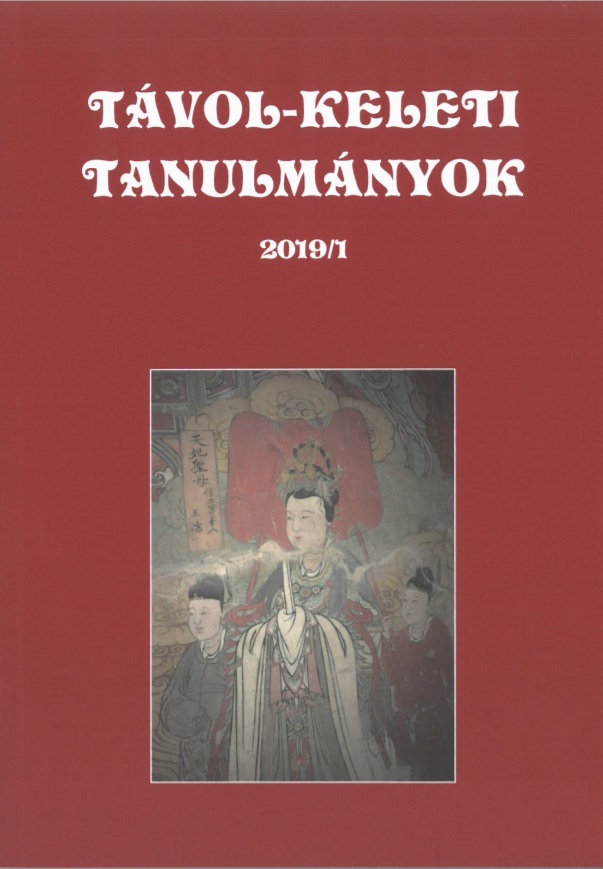The revitalisation of Ryūkyūan languages in the traditional classroom setup: The problems of teaching materials
Published 2020-03-30
Keywords
- Ryūkyūan language,
- language revitalization,
- endangered language,
- language teaching,
- orthography
- language transmission,
- minority language ...More
How to Cite
Copyright (c) 2020 the author(s)

This work is licensed under a Creative Commons Attribution-NonCommercial 4.0 International License.
Abstract
UNESCO has acknowledged the six main Ryūkyūan languages as definitely and severely endangered languages. The language community is trying to halt and reverse the advanced language shift and attrition with the help of programs widely used in other language revitalisation movements. Among the most common choices for language transmission are traditional language courses, which require textbooks and dictionaries. These teaching materials should be adapted to the culture and social background of the language to be revitalised. This paper aims to examine the recently published textbooks and the orthography they use.
References
- Funatsu Yoshiaki 船津好明, Nakamatsu Takeo 中松竹雄. 1988. Utsukushii Okinawa no hōgen (kotoba) 美しい沖縄の 方言 (ことば) [A gyönyörű okinawai nyelv]. Naha: Kikyōsha.
- Funatsu Yoshiaki 船津好明. 2010. Okinawaguchi sabira – Okinawago wo hanashimashō 沖縄口さびら ― 沖縄語を話しましょう [Beszéljünk okinawaiul]. Naha: Ryūkyū Shinpōsha.
- Kokuritsu Kokugo Kenkyūjo国立国語研究所. 1963. Okinawago jiten 沖縄語事典 [Az okinawai nyelv enciklopédiája]. Tokió: Ōkurasho Insatsu Kyoku.
- Nishioka Satoshi 西岡敏, Nakahara Jō 仲原穣. 2015. Okinawago no nyūmon – Tanoshii uchinaa guchi 沖縄語の入門 ― たのしいウチナーグチ [Bevezetés az Okinawai nyelvbe]. Tokió: Hakusuisha.
- Shimogawa Yūji下川裕治. 2008. Okinawa kotoba e-bukku 沖縄言葉絵ブック [Okinawai képeskönyv]. Tokió: Kadokawa Group Publishing.
- Cser András 2000. A történeti nyelvészet alapvonalai. Piliscsaba: Pázmány Péter Katolikus Egyetem.
- Elmendorf, William W. 1965. „Impressions of Ryukyuan-Japanese Diversity”. Anthropological Linguistics 3: 1–3.
- Fishman, Joshua 1991. Reversing Language Shift - Theoretical and Empirical Foundations of Assistence to Threatened Languages. Clevedon: Multilingual Matters.
- Gál Noémi 2009. „Veszélyeztetett nyelvek és nyelvfejlesztés.” Korunk 2. http://epa.oszk.hu/00400/00458/00146/galn.html (2018. 08. 07.)
- Hattori Shirō 服部四朗 1954. „Gengonendaigaku sunawachi goitōkeigaku no hōhō nitsuite 言語年代学すなわち語彙統計学の方法について [A glottokronológia avagy a lexikostatisztika módszereiről]”. Gengogaku Kenkyū言語学研究26. 27: 29–77.
- Heinrich, Patrick 2005. „What Leaves a Mark Should No Longer Stain – Progressive Erasure and Reversing Language Shift Activities in the Ryukyu Islands.” 1st International Small Islands Cultures Conference. SICRI, Kagoshima. 61–72.
- Hirayama Teruo 平山輝男. 1968. Nihon no hōgen 日本の方言 [Japán nyelvjárásai]. Tokyo: Kōdansha.
- Karimata Shigehisa 狩俣繁久. 2008. „Ton futsūgo – uchinaa yamatu guchi kureoru ka トン 普通語 – ウチナーヤマトゥグチはクレオールか [Ton futsūgo és az uchinaa yamatu guchi kreol nyelvek-e?].” Bulletin of the Institute of Ryukyuan Culture 55–65.
- Kiss Jenő (szerk.) 2003. Magyar dialektológia. Budapest: Osiris Kiadó.
- Malik Kenan 2000. „Let them die: The preservation of dying languages and cultures is pointless and reactionary. People want to join modernity.” Prospect. 20. november. https://www.prospectmagazine.co.uk/magazine/letthemdie (2019. 11. 21.)
- Matsumoto, Y. Scott 1982. Okinawa Migrants to Hawaii. Honolulu: Hawaiian Historical Society.
- Miyake Yoshimi 1995. "A dialect in the face of the standard: a Japanese case study. Proceedings of the Twenty First Annual Meeting of the Berkeley Linguistics Society: General Session and Parasession on Historical Issues in Sociolinguistics/Social Issues in Historical Linguistics 217-225. https://doi.org/10.3765/bls.v21i1.1385
- Moseley, Christopher (ed.) 2010. Atlas of the World's Languages in Danger. Párizs: UNESCO Publishing. http://www.unesco.org/culture/en/endangeredlanguages/atlas (2019.08.07.)
- Motonaga Moriyasu本永守靖. 1994. Ryūkyūken seikatsugo no kenkyū 琉球圏生活語の研究 [A ryūkyūi területek szociollingvisztikai vizsgálata]. Tokyo: Shunjusha.
- Mufwene, Salikoko. 2001. The Ecology of Language Evolution. Cambridge: Cambridge University Press. https://doi.org/10.1017/CBO9780511612862
- Noguchi, Mary G. - Fotos, Sandra. 2001. Studies in Japanese Bilingualism. Clevedon: Multilingual Matters.
- Ogawa Shinji小川普史. 2011. "Korekara no Ryūkyūgo ni hitsuyōna hyōkihō wa dono yōna mono ka これから の琉球語に必要な表記法はどのようなものか [Milyen írásrendszerre van szükség a ryūkyūi nyelvek lejegyzésekor]". Nihongo no Kenkyū 日本語の研究. 4: 99-111.
- Ogawa Shinji 2015. "Orthography development." In: Heinrich-Miraya-Shimoji (eds.) Handbook of Ryukyuan Languages. Berlin: Walter de Gruyter. 575-592. https://doi.org/10.1515/9781614511151.575
- Pellard, Thomas - Shimoji Michinori 2010. An Introduction to Ryukyuan Languuages, Tokyo: ILCAA.
- Tanji, Miyume 2007. Myth, Protest and Struggle in Okinawa. Abington: Routledge, Abington. https://doi.org/10.4324/9780203016121
- Thomason, Sarah 2015. Endangered Languages - an Introduction. Cambridge: Cambridge University Press. https://doi.org/10.1017/CBO9781139033817
- Trudgill, Peter 2000. Sociolinguistics: An introduction to Language and Society. Harmondsworth: Penguin.

